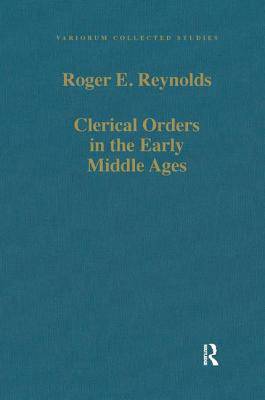
- Afhalen na 1 uur in een winkel met voorraad
- Gratis thuislevering in België vanaf € 30
- Ruim aanbod met 7 miljoen producten
- Afhalen na 1 uur in een winkel met voorraad
- Gratis thuislevering in België vanaf € 30
- Ruim aanbod met 7 miljoen producten
Zoeken
€ 70,45
+ 140 punten
Omschrijving
The theology of sacred or clerical orders of the Latin Church in the high and later Middle Ages developed from an amalgam of texts written from late patristic antiquity through to the early 12th century. Such texts, many studied and edited here, include letters, tracts, sermons, liturgical commentaries, ordination instructions, and canon law pieces. Within these texts multiple topics might be considered, such as the Old and New Testament origins of each of the clerical grades, their number and hierarchical ranking, the duties, dress and moral conduct of a cleric, and ordination ritual. Particularly striking are the multiple duties assigned each grade and their modification in various parts of the Western Church. Many of these texts found their way not only into more formal theological treatments of sacred orders, but also into ordination rites. Probably the most public and visible duty of a cleric was his function as a eucharistic officer, and one essay in this collection deals with perhaps the most famous early medieval depiction of this clerical ritual on the ivory covers of the 9th-century Drogo Sacramentary.
Specificaties
Betrokkenen
- Auteur(s):
- Uitgeverij:
Inhoud
- Aantal bladzijden:
- 345
- Taal:
- Engels
- Reeks:
Eigenschappen
- Productcode (EAN):
- 9780860788096
- Verschijningsdatum:
- 24/12/1999
- Uitvoering:
- Hardcover
- Formaat:
- Genaaid
- Afmetingen:
- 231 mm x 155 mm
- Gewicht:
- 598 g

Alleen bij Standaard Boekhandel
+ 140 punten op je klantenkaart van Standaard Boekhandel
Beoordelingen
We publiceren alleen reviews die voldoen aan de voorwaarden voor reviews. Bekijk onze voorwaarden voor reviews.











